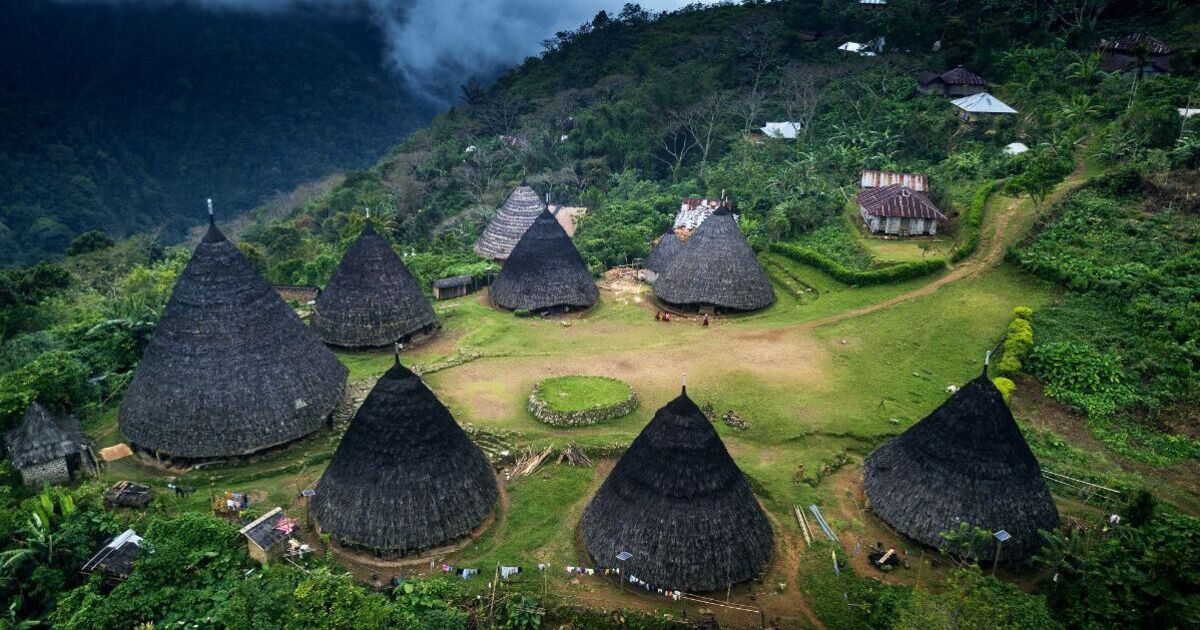Getting to Wae Rebo from the UK is no easy task. In fact getting there even from the nearest town isn’t even easy – as it takes four hours.
But sometimes a Herculean ordeal is worth it to see one of the wonders of the world, and that’s certainly what this beautiful little village that feels lost in time is.
It is located on Flores Island, one of Indonesia’s Lesser Sunda Islands, and home to just 1,800 people.
The island is a famous natural wonder with craggy mountains, blue waters, lush undergrowth and an abundance of wildlife. It once even hosted an ancient species of tiny human.
Wae Rebo’s residents help maintain that delicate natural balance through their way of life, as they live in a tightly constructed settlement of traditional homes made from the island’s bountiful resources.
But it is almost entirely isolated from the rest of the island and a long trek from the nearest small town.
Wae Rebo is a village of the Manggarai, an Indonesian ethnic group who first founded a settlement a century ago.
Empu Maro, a distant relative of the current population, founded the village, legend has it under the guidance of a friendly spirit.
The community has since flourished, but many modern inhabitants continue to observe its time-honoured traditional customs.
They reside in buildings named “Rumah Niang” or “Mbaru Niang” known for their thatched, pointed roofs that sit in a circle in the village centre.
Villagers live on an elevated 1,200-foot outcrop and are surrounded by a dense forest, meaning they also have limited access to modern amenities.
They have no mobile coverage, and even electricity is limited, with availability restricted to a 16-hour window between 6am and 10pm.
And it is a long way from its nearest neighbour, Denge Village, accessible only via a three to four-hour drive.
Despite its relative isolation and stunning, unique surroundings, Wae Rebo isn’t particularly popular with tourists.
But its visitor numbers are still more than triple the local population, with approximately 6,000 people touring the village per year, the vast majority of whom are native Indonesians.
The village is also an award winner, having received the Top Award of Excellence from UNESCO and UNESCO Asia Pacific Heritage Awards in 2012.
